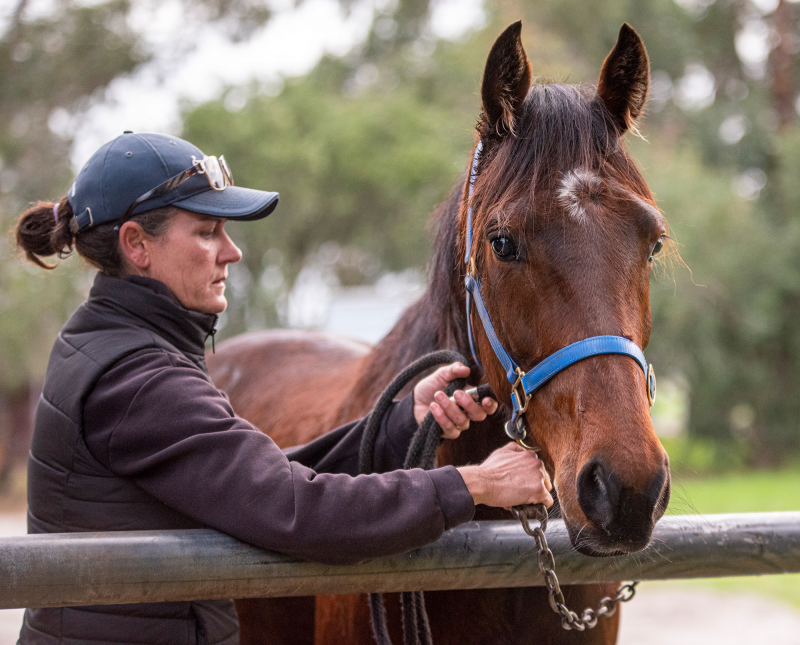17 October 2019
Ms Amy Donaldson
Producer
ABC 7:30
Via email……
Dear Amy,
Thank’s for the opportunity to respond to your questions regarding the harness racing commitment to equine health and welfare for your upcoming story.
Harness Racing Australia (HRA) has for years been focussed on improving the health and welfare of all Standardbreds, and whilst succeeding in a number of areas, we remain focussed on continuous improvement.
We believe “there is no finish line” to this continuum, and this belief is enshrined in the HRA Horse Welfare Statement (attached).
We have made strong progress in recent years, with some examples being:
• establishment of a highly skilled and experienced welfare committee, the Standardbred Welfare Advisory Group (SWAG);
• continuous rule restriction and moderation on using the whip;
• drafting new rules controlling the use of tongue ties;
• introducing a new handicapping system which provides more racing opportunities to horses of all abilities, while encouraging them to remain in the racing pool for longer;
• world leading regulation of prohibited substances (global benchmarking statistics available here: http://www.wtc2019.se/news/global-welfare-integrity-stats-2018/);
• introduced microchipping for identification and traceability (2017);
• enforcing the formal deregistration of a horse or notification of a horse’s death rules - including time restrictions; and,
• ongoing analysis of raceday injury and incidents statistics measured across 2,763,953 starters across 37,191 race meetings, which have been reduced to:
injuries to 0.27% - equivalent to less than 3 injuries in 1,000 starts
euthanisia rate of 0.002% - equivalent to 2 deaths out of 100,000 starters
These changes strongly indicate that, unlike the not so distant past, the industry no longer adopts a default position of resisting change to regulations promoting better welfare outcomes.
This includes overwhelming industry support for State based rehoming programs and life after racing activities.
To your questions:
• HRA wants to secure the welfare of horses before, during and after racing careers.
• While rehoming of horses remains the domain of the owner, HRA imposes specific rules and timing around the compulsory notification of a horse’s deregistration from racing and advising of that horses post-racing activities.
• Further, we have made our industry standards and expectations clear through the HRA’s Horse Welfare Statement and Equine Health & Welfare Code of Conduct.
• At the end of their racing life, almost 80% of Standardbreds are rehomed, according to evidence provided to the Senate RRAT Reference Committee.
• Around one percent (1.06%) find their way directly to a knackery or abattoir. This relates to Standardbred foal crops for the previous 5-years. This is because not all horses are suitable for rehoming, such as those with illness, injury or behavioural concerns.
• While not a preferred outcome, and unpalatable to many, it is currently a lawful and practical decision for an owner to have a horse consigned to a licensed and regulated knackery or abattoir, particularly when a horse is approaching the end of its life.
• HRA recognises that there are instances where the dispatch of a Standardbred via a licensed and regulated knackery or abattoir may be the most suitable and humane option. HRA also recognise an owner’s right to make lawful decisions in this regard.
• These rates are low and consistent with HRA’s commitment to overall equine health and welfare outcomes.
• Of course, this data does not remain static as horses age. As foal crops get older, this figure increases, and for horses born in 2007/08 is 4.8%.
• HRA does not conduct checks or inspections of knackeries or abattoirs to ensure Standardbreds are not being sent there as it is not breaching any law.
• HRA acknowledges that other jurisdictions also manage excellent welfare endeavours. HRA is not currently considering any change to the current position.
• HRA will continue to monitor and enhance the many successful equine health and welfare strategies currently in place. Many of the strategies are still relatively new and will need time to realise their full potential while undergoing continuous review and improvement.
In closing, HRA recognises that it can always improve and we remain open to challenge and welcome suggestions for improvement.
We are not perfect, nor is our work complete, however our achievements are real and significant for our horses and we will continue on our pathway to continually improved equine health and welfare outcomes.
If I can provide further clarity on any of these or other points, feel free to contact me at any time.
Kind regards,
Andrew Kelly
Chief Executive
Keeper of the Australian Trotting Stud Book


